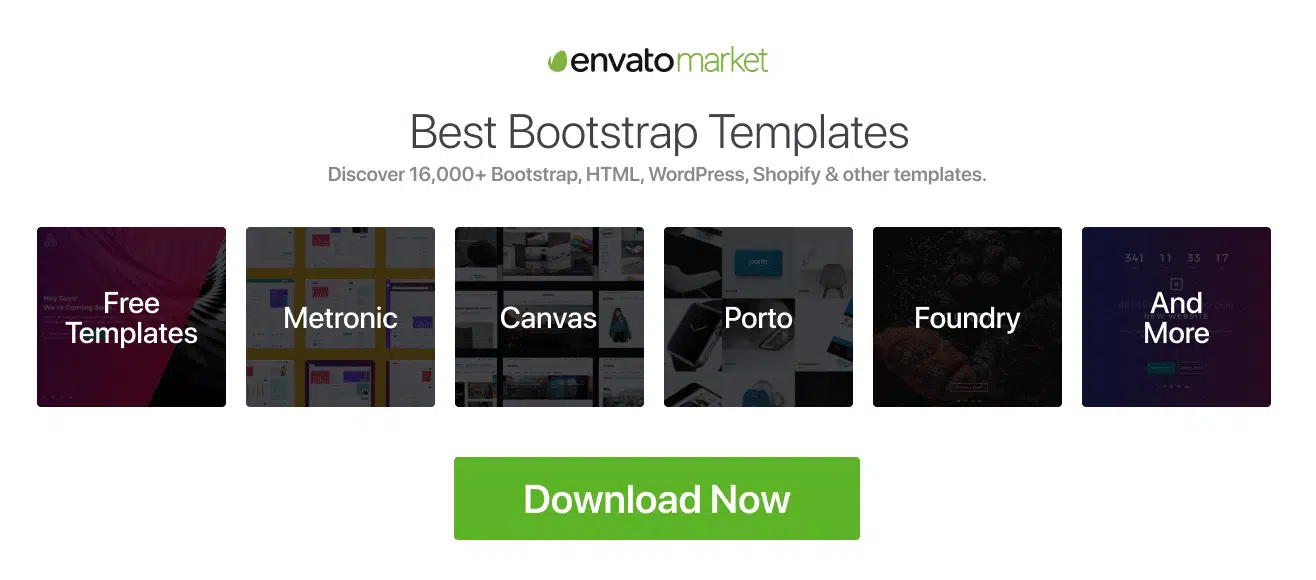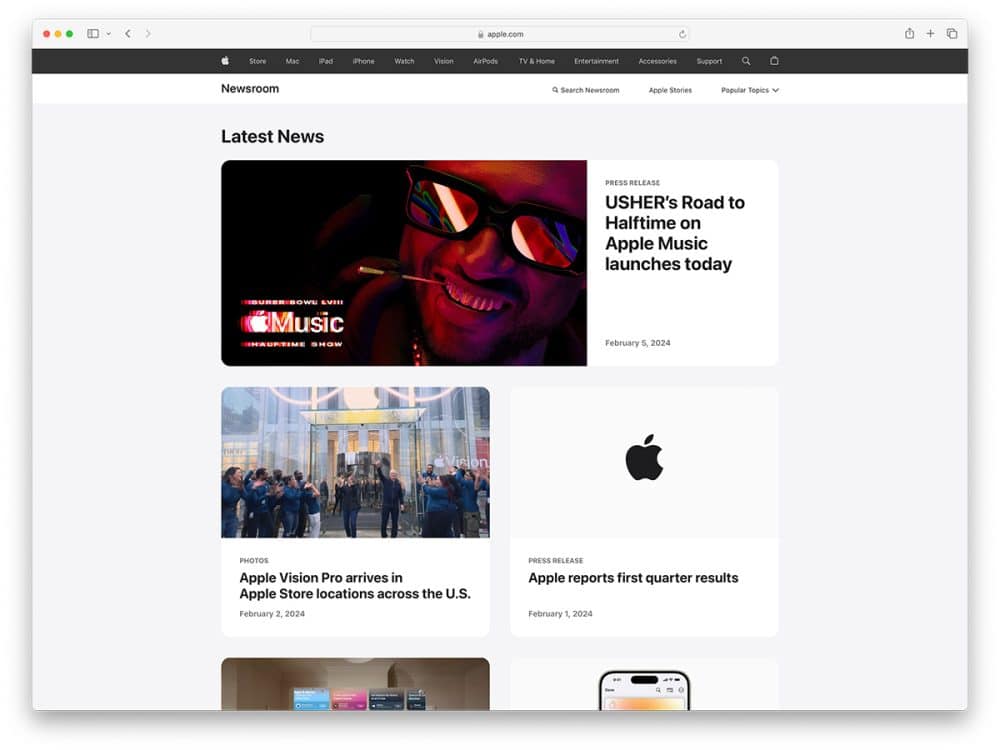
Here is our in-depth exploration of the best in digital publishing, spotlighting the Ghost platform and showcasing a selection of outstanding blogs and websites. The Ghost platform, known for its emphasis on simplicity, speed, and SEO optimization, has become a favored choice for content creators around the globe. This platform isn’t just for independent bloggers; major brands and influential voices across various industries have turned to Ghost to power their digital content, underscoring its robust capabilities and flexibility.
In this feature, we’ve meticulously curated a list highlighting the most compelling and innovative blogs and websites built using Ghost. This collection spans various uses—from personal and professional blogs prioritizing content readability and user experience to complex websites of renowned brands leveraging Ghost for its efficiency and customization potential. You’ll see examples from sectors as diverse as technology, fashion, finance, and non-profit, illustrating the platform’s versatility.
Among the notable big brands that have embraced Ghost for their content strategy are Mozilla, which uses the platform for its community blogs, and Zappos, known for its innovative approach to customer service and company culture blogging. These brands, along with others featured in our list, exemplify how Ghost’s streamlined content management system can be tailored to meet the unique needs of any organization, regardless of its size or industry.
Each example in our selection not only showcases the aesthetic and functional capabilities of the Ghost platform but also serves as a wellspring of inspiration for digital creators looking to make their mark on the internet. Whether you’re a solo blogger passionate about sharing your journey or a multinational looking to revamp your digital content strategy, the examples we’ve gathered demonstrate the endless possibilities that Ghost offers.
Join us as we dive into these stellar examples, offering a glimpse into the latest design trends, content strategies, and technological advancements that are shaping the future of online publishing. Through this journey, we aim to illuminate the path for content creators seeking to harness the power of Ghost to craft engaging, impactful, and memorable digital experiences.
Best Websites Built with Ghost
1. Apple News Room
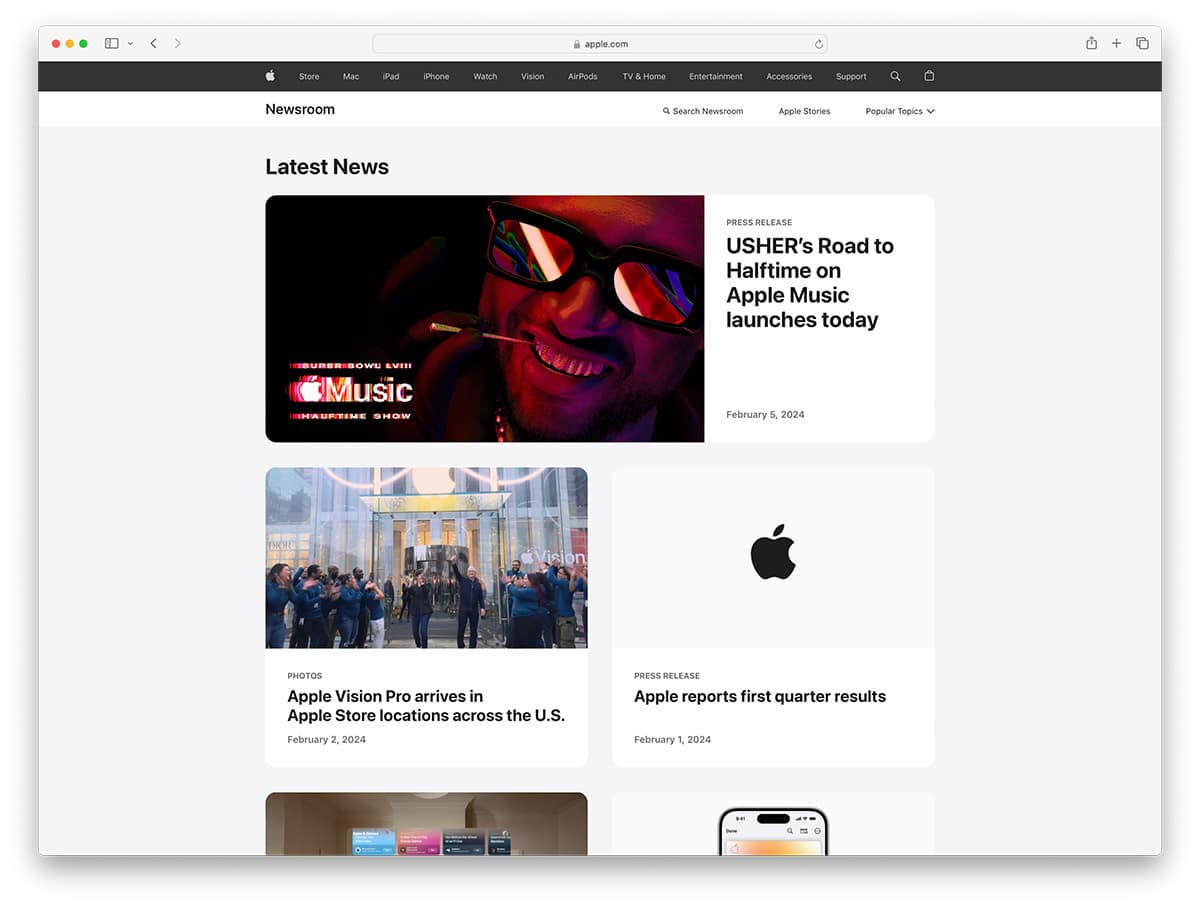
Apple is certainly the biggest company using Ghost for its website. Their entire website was not built using Ghost, just their newsroom. It is still a popular website that receives millions of visitors monthly. Newsroom design blends perfectly with Apple’s minimalistic greyscale design language and keeps the main menu from the landing page.
2. Square Blog – The Bottom Line
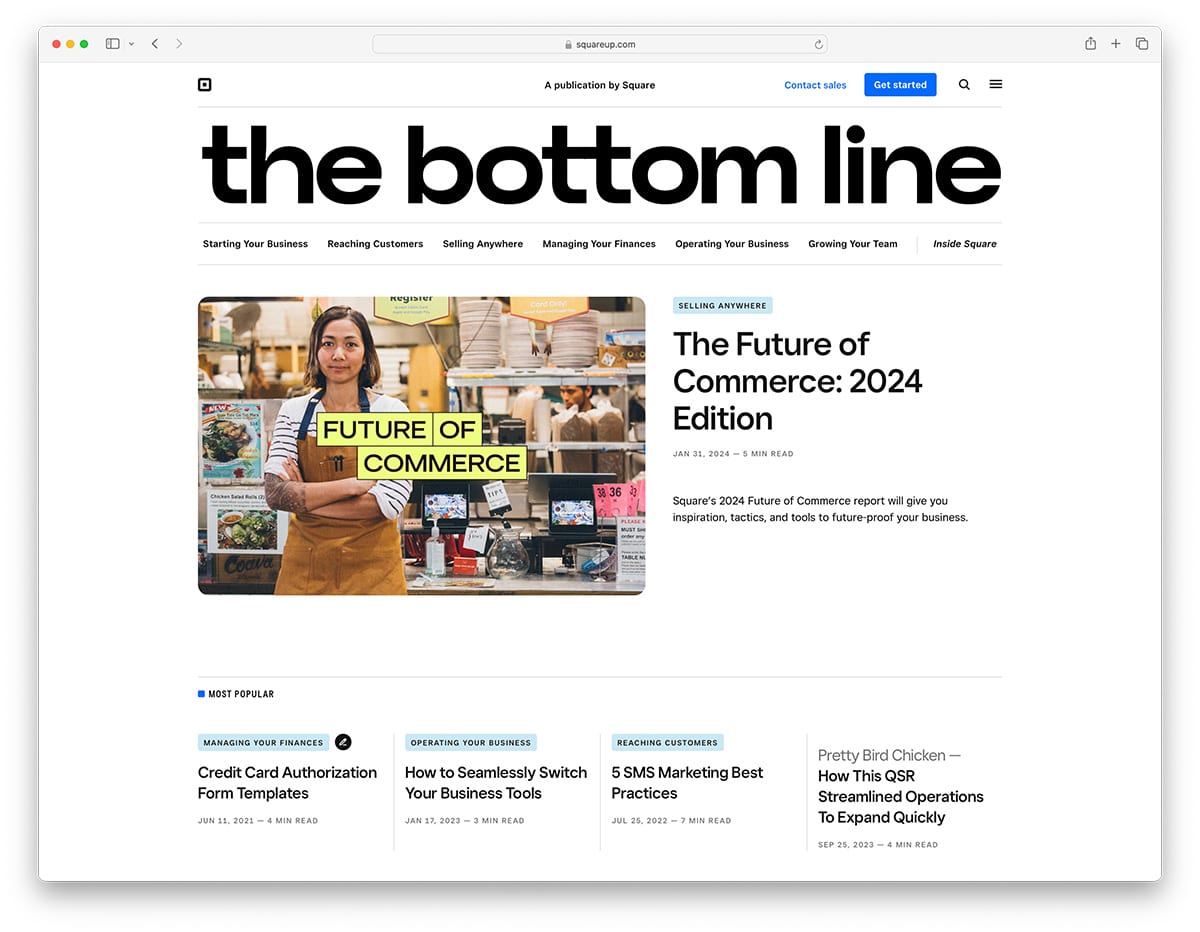
Square is a digital payment provider based in San Francisco, California, founded by one of the founders of X (formerly Twitter). Their main website runs on a custom setup, but their blog is based on Ghost. It features a minimalistic design with a featured section on top and a grid layout underneath. The blog, like their main website has a clear call to action button in the header and elsewhere on the page.
3. DuckDuckGo Blog – Spread Privacy
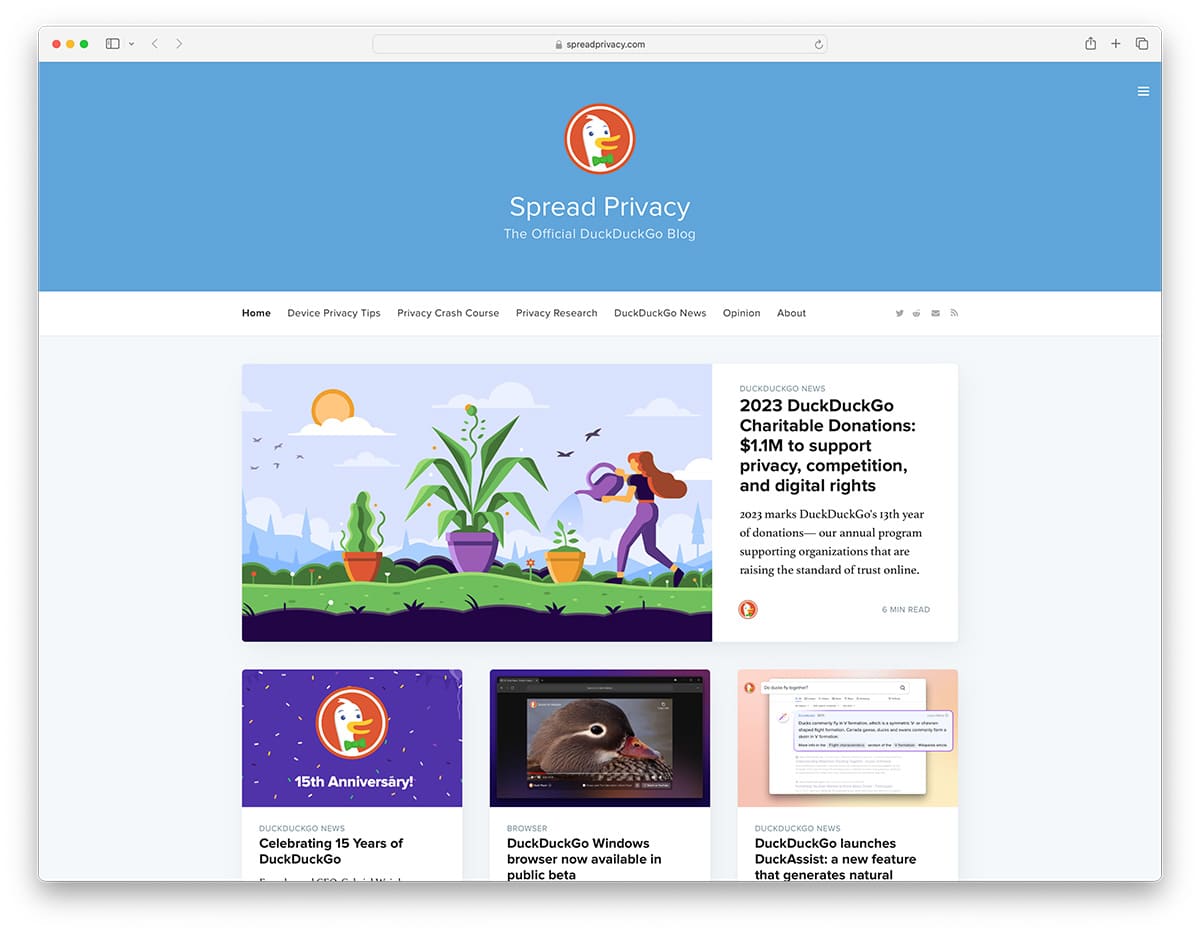
DuckDuckGo is a privacy-focused search engine that is slowly gaining popularity, and it is one of the few that can take away traffic from all might Google Search. They use Ghost for their news blog, announcing donations, product updates, and more. While not many people know about DuckDuckGo, it has been around for over 15 years and serves close to 100M searches a day.
4. Mozilla Mixed Reality Blog
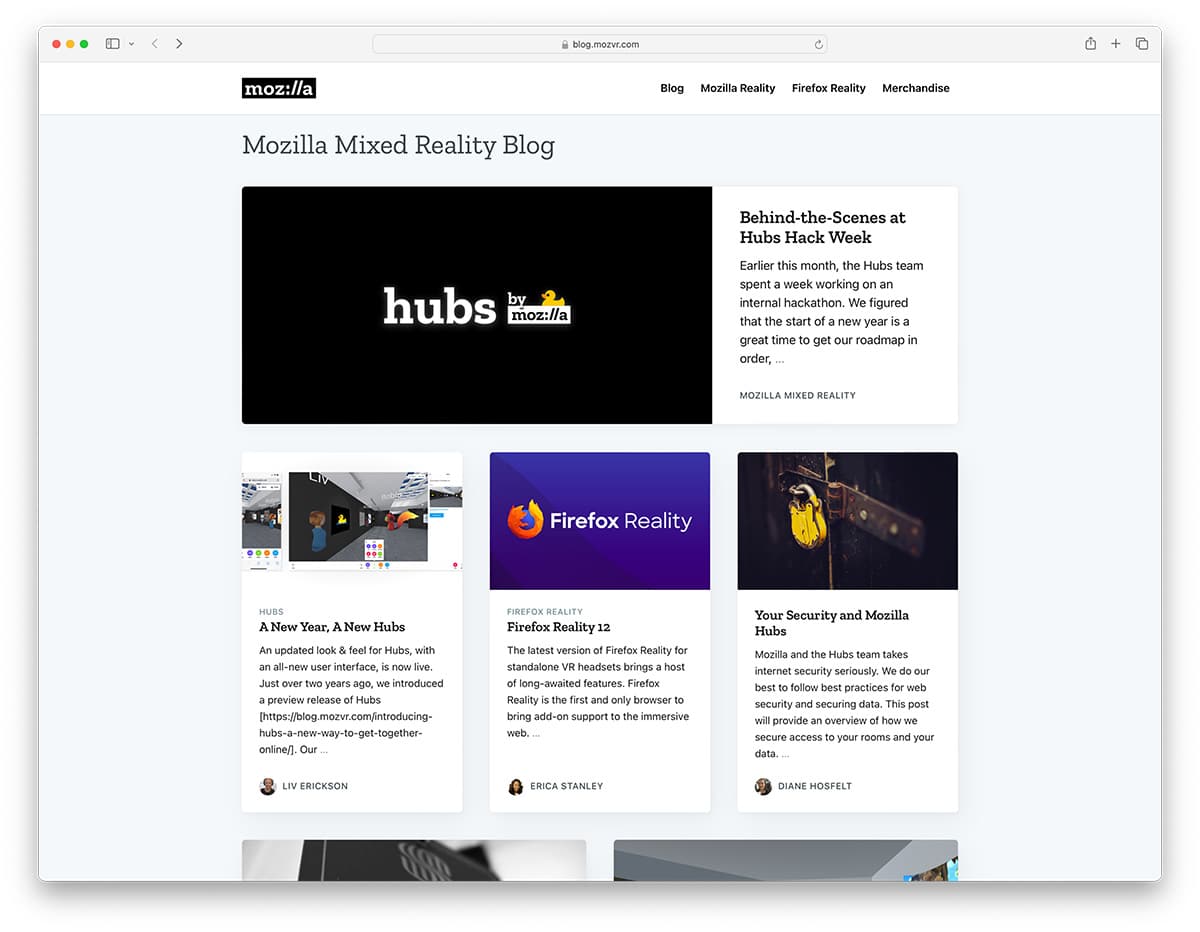
Mozilla is better known for its Firefox, the 3rd most popular internet browser behind Chrome and Safari. They run many blogs, but one on VR/AR is based on Ghost. This blog features a clean design you can replicate using any ready-made Ghost themes.
5. Guidelines.com
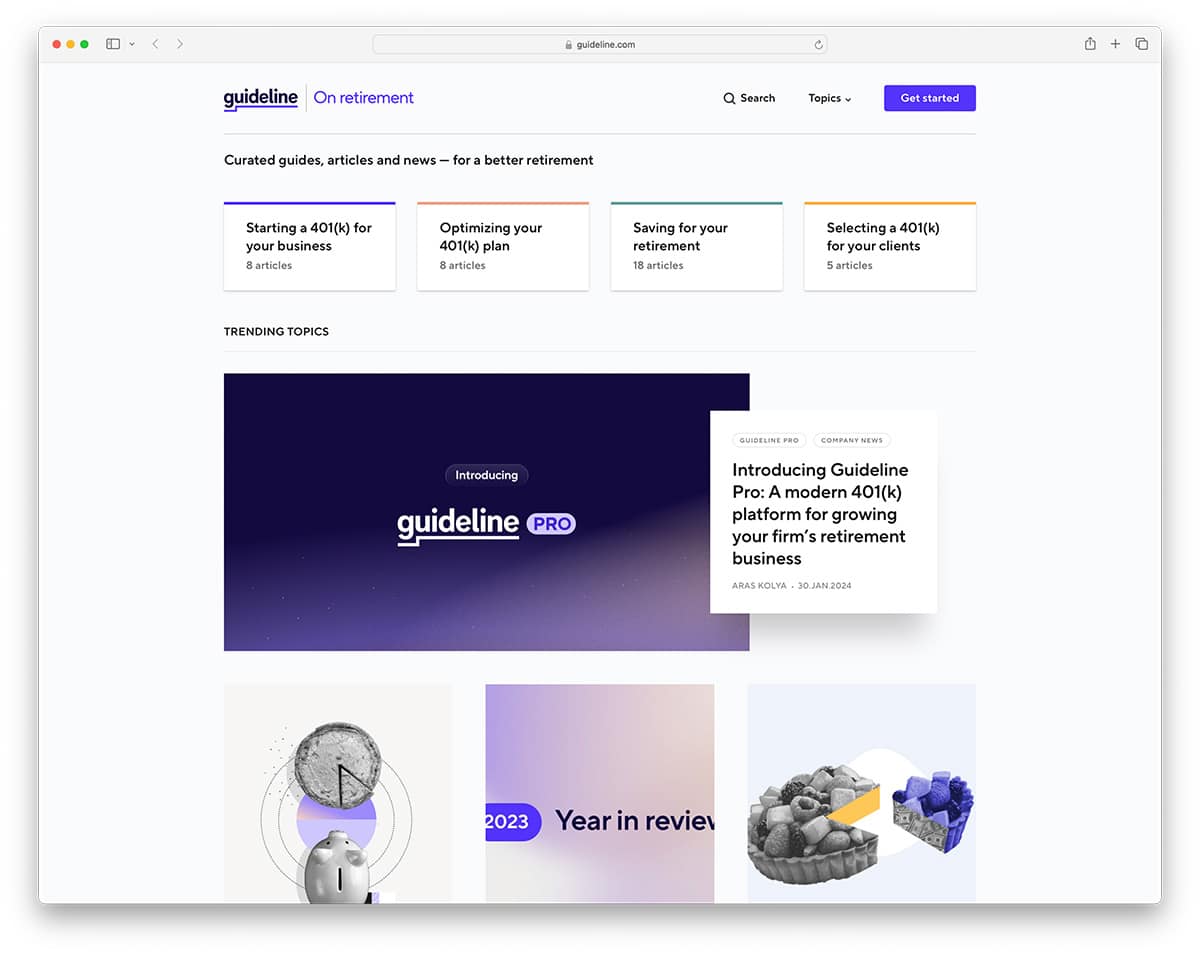
Guidelines is another widely popular website focusing on financial information, and their retirement information blogging platform is based on the Ghost blogging platform. It features a clean design that blends perfectly with the rest of their website.
6. Ookla (Speedtest.net Blog)
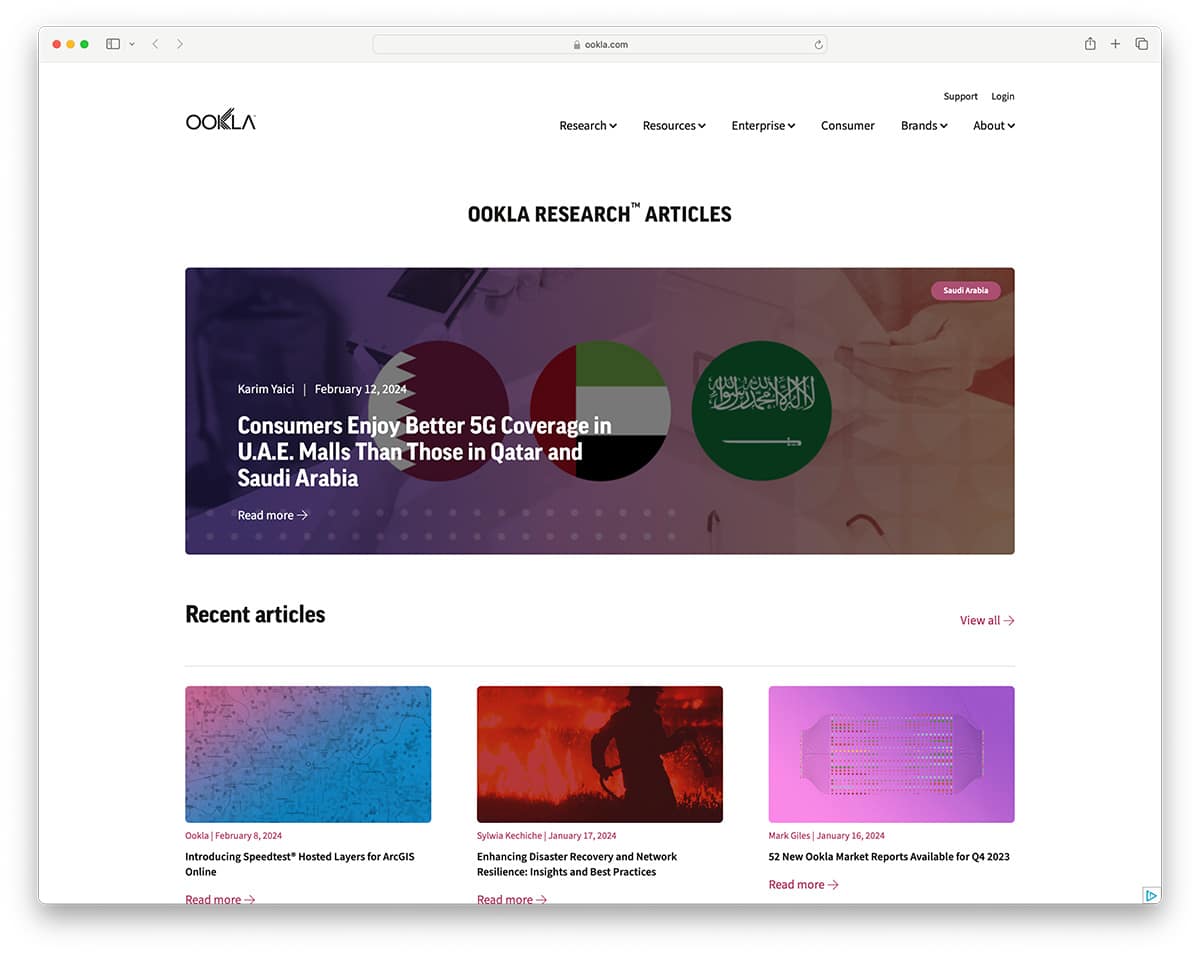
I bet you have no idea what Ookla is, but I know you have visited Speedtest.net millions of times to test your internet speed. Ookla is behind this widely popular service that hundreds of millions of users use. The blog itself focuses on company news to update the community.
7. OpenAI
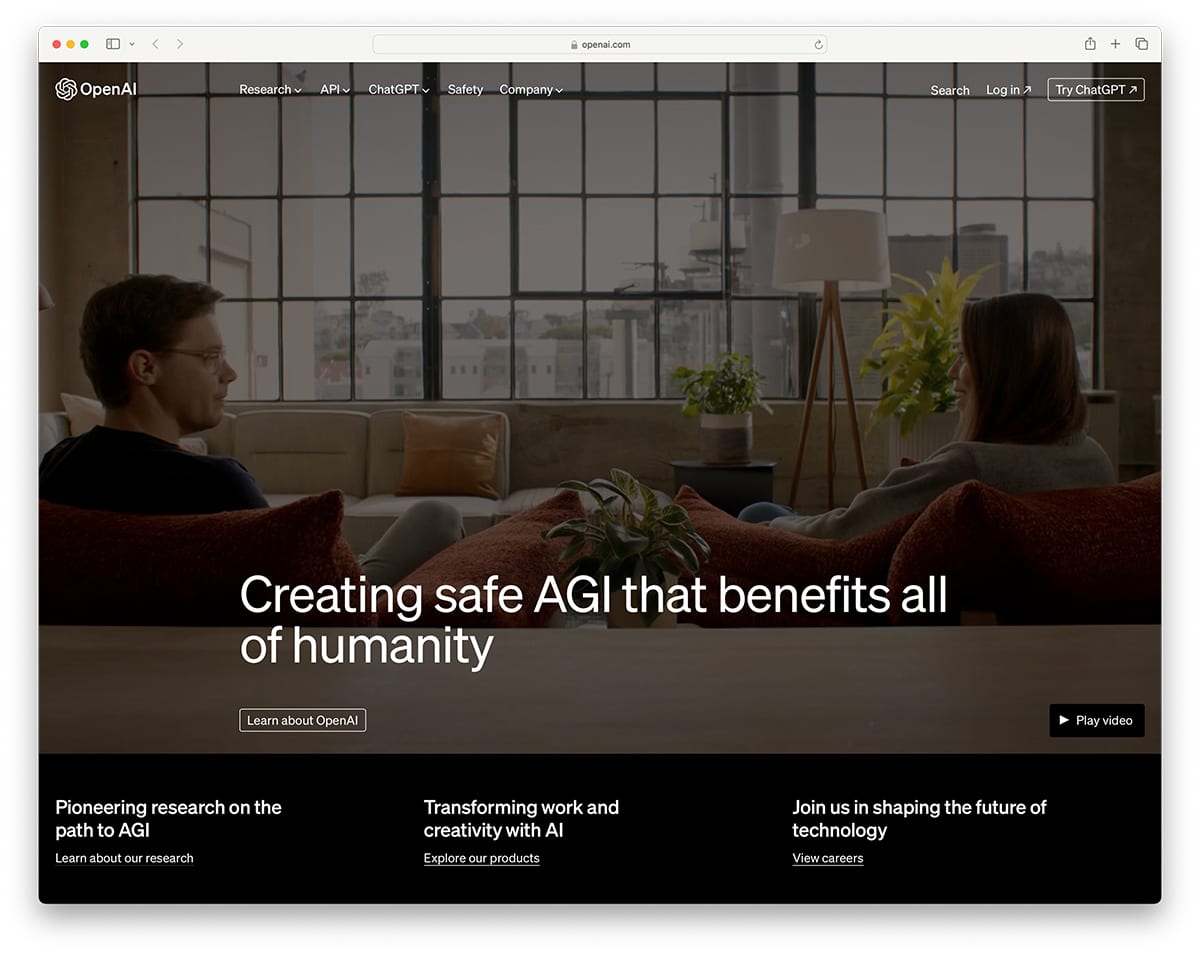
In recent years, OpenAI has become a household name thanks to ChatGPT. Their corporate website happens to run on Ghost and features a dark, minimalistic layout focused on their main offerings.
8. Emojipedia Blog

Emojipedia has the brightest and most colorful design, but I don’t blame them because they showcase everything about emojis. Their blog focuses on news in the emoji space, such as new emoji announcements and which companies are adopting and introducing new emojis.
9. Gusto Engineering Blog

Gusto is the most popular HR and payroll management platform. They are using Ghost platform for their engineering blog that shows behind the scenes of what and how they are building and what you can expect when joining the company as an engineer.
10. Quillette
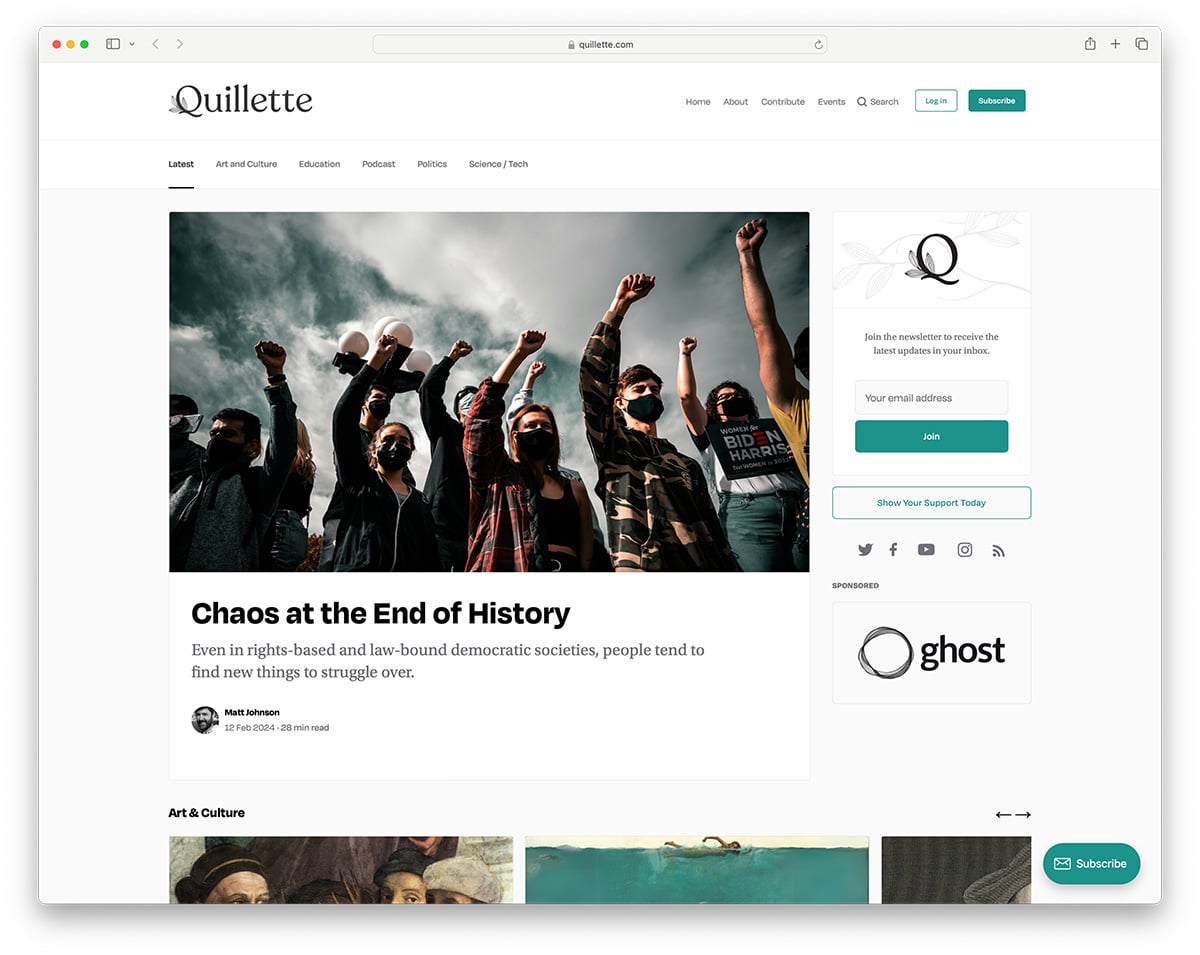
Quillette is a blog on art, culture, politics, and science. It used Ghost features such as subscriptions and podcasts and is a great example of what you can create without writing a single line of code.
11. Clubhouse
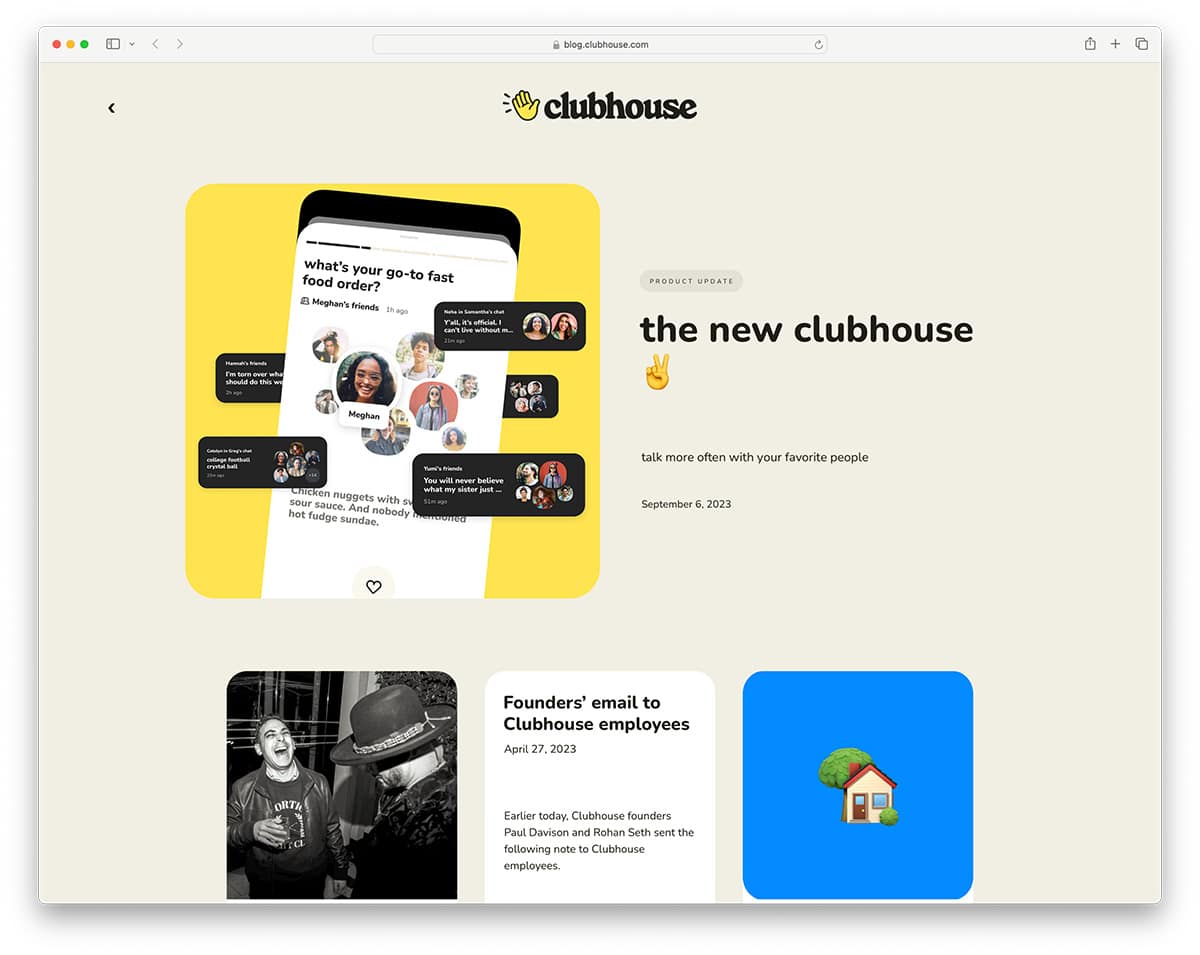
Clubhouse used to be a sensation during lockdown but has slowly died since Instagram, X, and others have introduced their alternatives. However, they are using Ghost for their blog and have done a great job customizing it to match their design language.
12. Pocket Casts Blog

Pocket Casts is a freemium podcasting app made popular thanks to tech influencers like MKBHD. Most of their features are free, and the premium version is more like a donation than anything else.
They are using Ghost for their news blog that announces new features, what’s brewing, and what they recommend to listen on their platform.
13. Pics.io

Pics.io is a platform for those who need to organize huge amounts of files, such as images, videos, audio files, etc. It uses existing cloud storage providers’ technology to categorize files and make them easier to find when you need them most.
In the usual fashion, they use Ghost for their blog, which has a simple design and a clean call to action in the sidebar for lead generation.
14. Yeezy Mafia

Yeezy Mafia is a popular eCommerce website that provides information about shows that used to be popular for many years before their main designer got publically canceled. This site still exists today, but I wouldn’t be surprised if it eventually merges with another website. Meanwhile, their news section uses Ghost with a basic white theme with a featured post section, while the rest is a basic grid.
15. Fullstory

Fullstory is a platform that focuses on tracking and optimizing user experience. They use Ghost for their company blog, announcing product news, engineering insights, case studies, etc. If you are wondering if Ghost has a good user experience, then the fact that Fullstory uses it should be enough to convince you that it has the best UX.
16. freeCodeCamp

freeCodeCamp offers exactly what its name implies – free code camp. Their blog uses Ghost, which features a simple timeline style. It is one of the most well-maintained blogs based on how many blog posts are published every week. Their design leaves much to be desired, but it is a good example that no blog posts are too much for the Ghost platform.
17. XE Blog
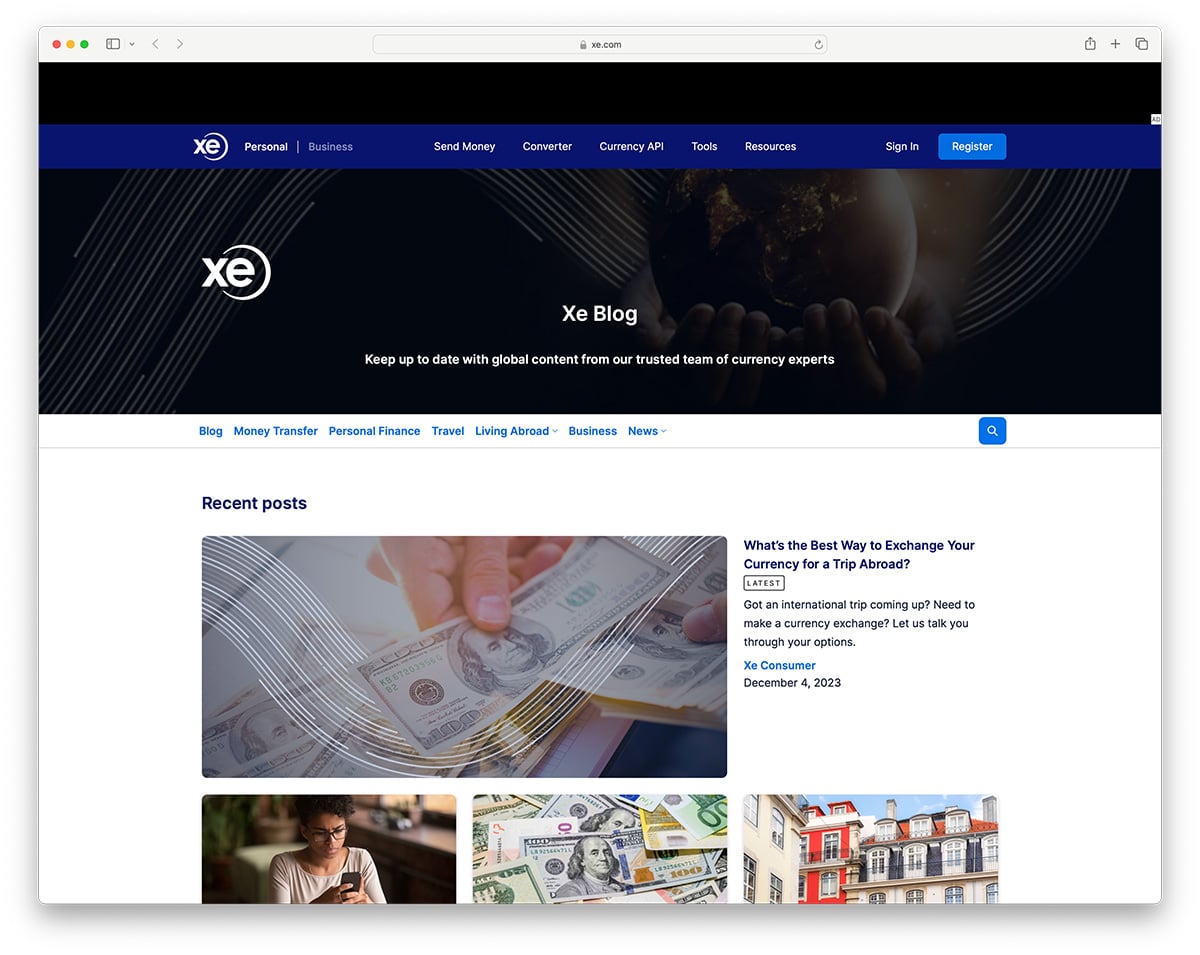
XE is a popular money transfer and exchange platform with over 30 million users worldwide, and its API is used by 300 major finance companies such as Shopify and ClearBooks. They use Ghost for their blog, focusing on company news and financial education. It features a dark color scheme that builds trust in its users.
18. Cloudflare Blog

Cloudflare is one of the biggest cloud solution providers used by almost all S&P 500 companies to speed up and protect their websites and apps. Even uiCookies and all our other brands use their services. Their insider blog uses Ghost to update customers on the news about their services and global internet trends. The log features a completely minimalistic design like the entire Cloudflare website.
19. Codecademy

Codecademy is one of the OG providers of online education related to development. It was launched in 2011 and has helped millions of users, including myself, learn to code. If it weren’t for Codecademy, I would never have learned PHP, JavaScript and other languages.
Their blog uses a standard Ghost layout with a dark/light mode switch and featured images that align with their overall design language.
20. PetCube – Petfeed

PetCube offers Internet of Things (IoT) devices for pet users, such as cameras, food dispensers, and other gadgets. They are using Ghost to post more educational pet-related information that would help pet owners in general. They are not pushing their gadgets too much with their blog, but I bet it will change once the blog’s authority grows.
The blog features unique illustrations, certainly made by a professional. The design is simple and minimalistic, focusing on the illustrations.
PetCube’s website is one of the fastest-loading ones. Wonder why? Because they chose the best Ghost hosting provider.
21. 7Shifts Blog

7Shifts is a restaurant management platform used by millions of restaurants. They use their blog to promote their platform by doing listings that are biased toward their platform.
The blog features beautiful gradients for many of its elements, and they are not shy with calls to action that are everywhere you look.
22. BetterWeb by Qwant Search
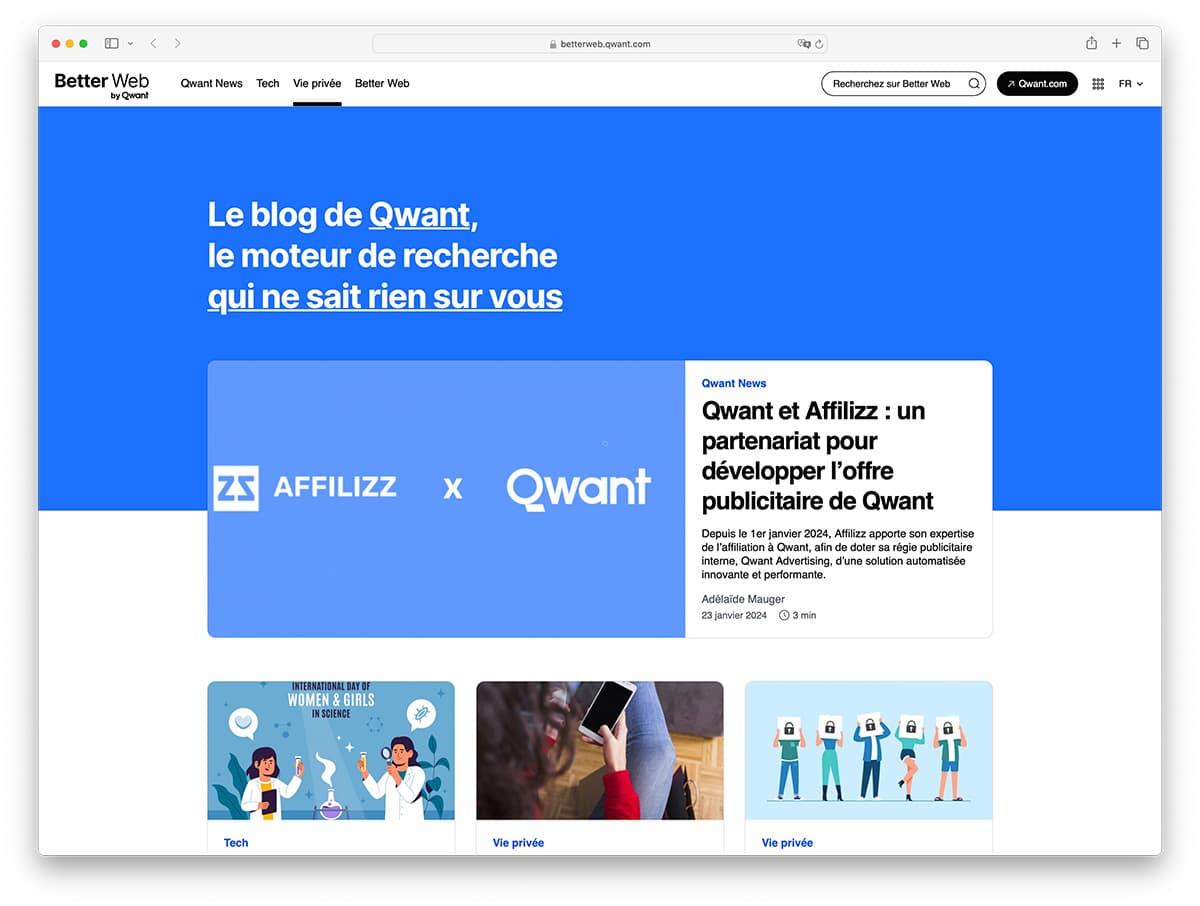
Qwant is another privacy-focused search engine that claims it is not tracking its users. Like most other brands, Qwant uses Ghost for its news blog, focusing on product announcements and education related to its industry—privacy.
23. Getaround Blog

Getaround is a car rental platform with 15 years of history. They use Ghost to post educational content about renting a car on a budget, product announcements, and insights. The design focuses on automotive content with a large hero image.
24. Unsplash
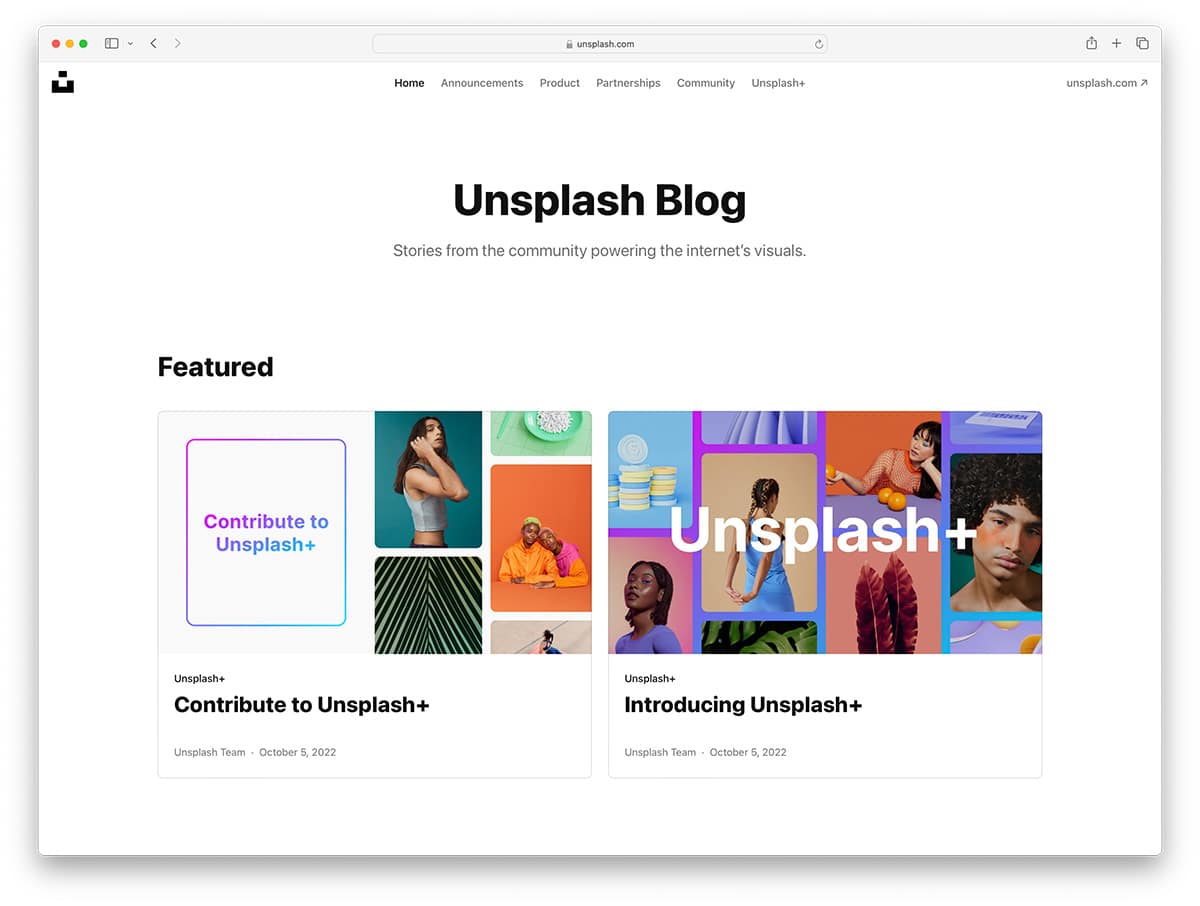
Unsplash is the most popular resource for finding images for websites, design projects, presentations, etc. It has a library of hundreds of millions of websites that are free to use. They are using Ghost to announce company news, and just like their main site, the blog is image-focused and uses white space well.
25. Kickstarter Blog

Kickstarter is a platform that became popular 10 years ago but has fallen since. Mainly thanks to many failed campaigns and scams when products were promised but weren’t even theoretically possible.
Regardless of how bad their main website is doing, their blog is going strong and offers educational content on launching new products.
26. Duolingo

Duolingo is an app that allows you to learn any language. They use their Ghost blog to post even more educational content related to language learning. Like the app, it features bright colors that could be too much for some.
27. Revolut

Revolut is a popular UK-based all-in-one finance app for spending, saving, and investing money. It has lower fees than any legacy bank while offering a faster and more reliable service. They are using the Ghost platform to announce product news and provide financial literacy to their users.
28. Airtable – For the Record

Airtable is an app-building platform used by many large businesses like Times, BuzzFeed, Medium, Expedia, and 300,000 others. Like most other companies, Airable uses Ghost to publish news about their product offering. It features an unmistakable Ghost blog design we have seen for corporate blogs.
29. HelloPartner
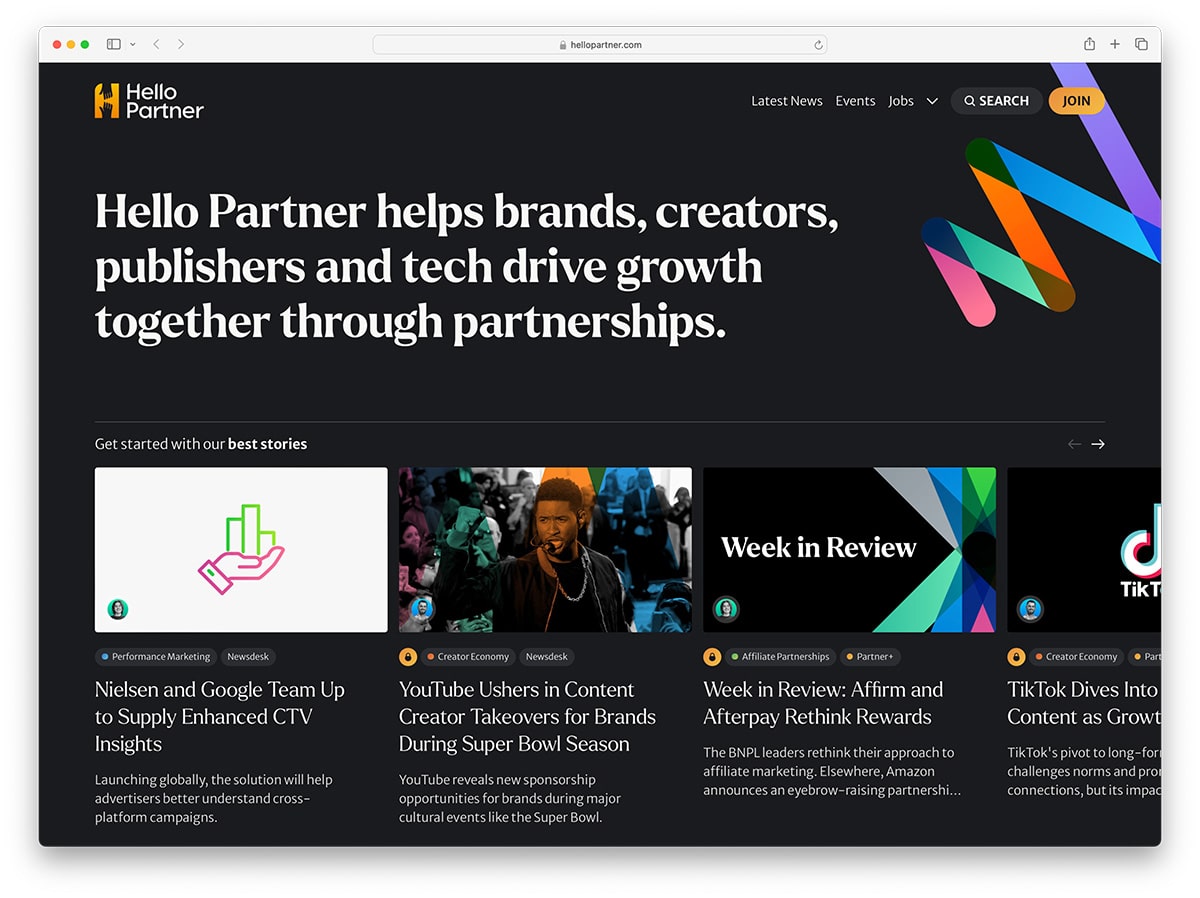
Hello, Partner is a unique concept since it is mainly a blog focusing on education creators, brands, and publishers while trying to get them to join their platform. It features a dark yet minimalistic design with a clean hero section explaining their offer.
30. Inside
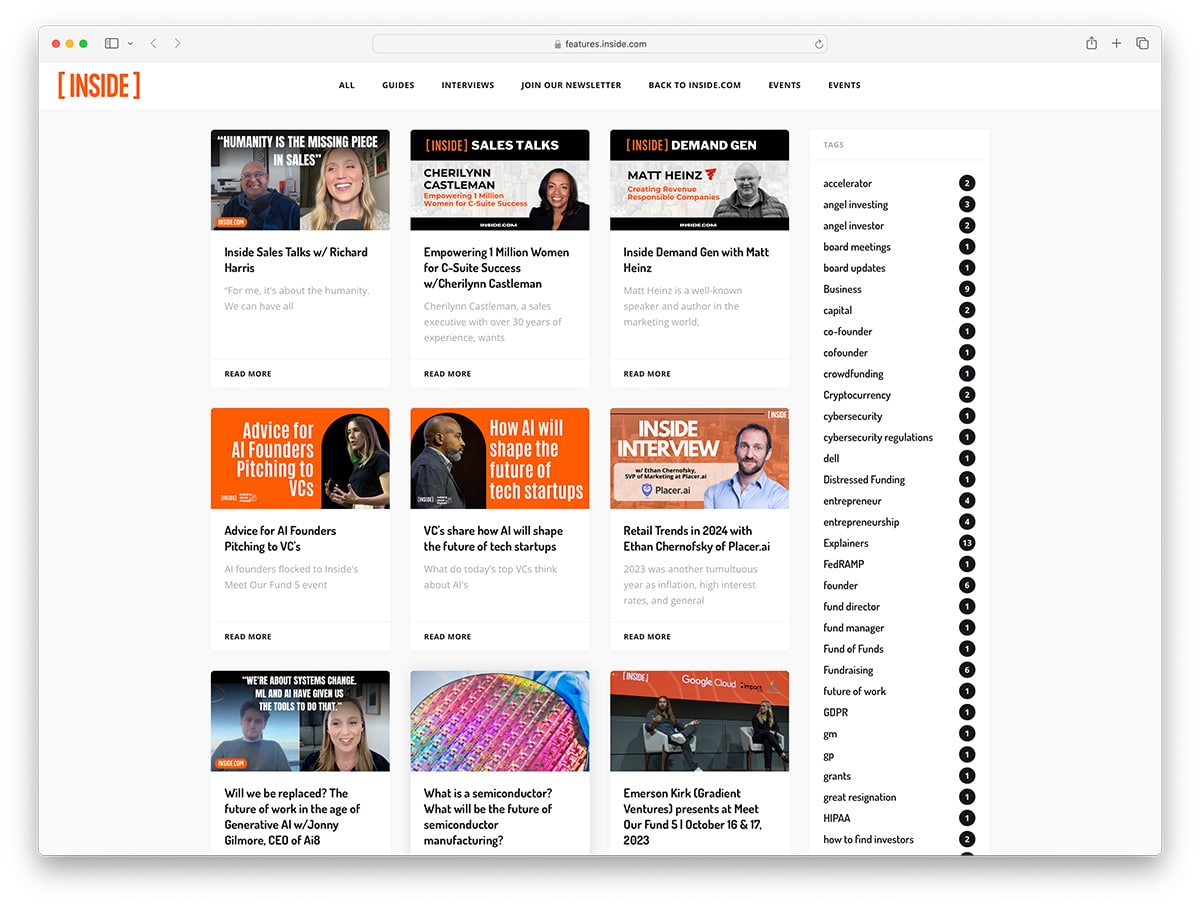
Inside is a completely customizable newsletter made for executives. It is one of few examples that use the Ghost platform to the maximum with user subscriptions, memberships, and much more. It also has a blog functionality hidden away, but it is a newsletter-first platform.
These are just a few popular websites that use Ghost for blogging, newsletters, and subscriptions. There are some other 100,000 live Ghost websites, but we ensured you get a good glimpse of what is possible and that even the biggest brands worldwide aren’t shying away from this amazing CMS.
Why Should You Choose Ghost For Your Next Website?
Choosing the Ghost platform for building a blog or website comes down to a blend of simplicity, performance, and a focus on content creation and delivery. Ghost is a powerful, open-source platform designed specifically for professional publishing and is an excellent choice for bloggers, journalists, and companies aiming to establish a strong online presence. Here are several reasons why Ghost might be the ideal choice for your next project:
1. Simplicity and Ease of Use
Ghost offers a clutter-free, user-friendly interface that focuses on what matters most: content. Its minimalist design philosophy removes unnecessary distractions, allowing creators to concentrate on writing and publishing. For example, the Ghost editor provides a seamless writing experience, with markdown support that makes formatting straightforward and efficient.
2. Performance and Speed
In the digital age, speed is crucial. Ghost is built on a modern technology stack using Node.js, which ensures that websites and blogs hosted on the platform load quickly, improving user experience and SEO rankings. This is particularly important for content-heavy sites, where slow load times deter visitors. For instance, businesses like Buffer and OpenAI have chosen Ghost for their blogs, benefiting from its superior performance to engage their audience effectively.
3. SEO Optimization
Ghost has built-in SEO tools that help your content rank higher in search engine results. Features like automatic sitemap generation, canonical tags, meta titles, descriptions, and AMP (Accelerated Mobile Pages) support ensure your site is optimized for search engines. This means creators don’t have to spend extra time or resources on third-party plugins or custom development to get their SEO right.
4. Customization and Flexibility
While Ghost offers simplicity, it doesn’t sacrifice flexibility. The platform supports extensive customization through themes and integrations. You can choose from a wide range of free and premium themes tailored to different niches and needs or create a custom theme that perfectly matches your vision. Moreover, Ghost’s API and webhooks allow for integrations with various third-party services and tools, enabling functionalities like newsletters, membership systems, and eCommerce capabilities.
Here are the best free Ghost themes for blogs, websites, newsletters and more.
5. Focus on Monetization
Ghost is uniquely positioned to support creators looking to monetize their content. With built-in membership and subscription features, creators can easily set up recurring revenue streams by offering paid subscriptions to their audience. This model has been successfully adopted by creators like Ghost’s founder, John O’Nolan, who uses the platform to run a successful blog and community for digital nomads.
6. Community and Support
Finally, choosing Ghost means becoming part of a vibrant community of creators, developers, and publishers. The platform is backed by a non-profit organization, ensuring it remains independent and focuses on users’ needs. The Ghost community is active and supportive, offering help through forums, tutorials, and extensive documentation.
In conclusion, Ghost stands out as a blogging and website platform for its focus on simplicity, speed, SEO, customization, monetization, and community support. Whether you’re a solo blogger, a journalist, or a business, Ghost provides the tools and features needed to create and grow a successful online presence.
Please read our full Ghost platform review for more information on why you should use this website builder.
Conclusions
As we conclude our exploration into the vibrant world of blogs and websites powered by Ghost in 2024, it becomes abundantly clear why this platform stands out as a premier choice for creators, businesses, and digital publishers seeking sophistication, speed, and a user-centric approach to their online endeavors. The diverse examples we’ve delved into not only showcase Ghost’s adaptability and capacity to serve a broad spectrum of content requirements—from sleek, narrative-driven blogs to comprehensive, feature-rich websites—but also underscore its core strengths: intuitive design, exceptional performance, advanced SEO tools, and a steadfast commitment to putting content first.
These case studies illuminate the significant advantages of Ghost’s customizable nature and its arsenal of powerful integrations. Ghost enables users to craft uniquely tailored sites that resonate with their specific audiences, whether through visually stunning themes, enhanced functionalities, or strategic monetization avenues.
The array of brands, startups, independent bloggers, and creatives who have embraced Ghost as their platform of choice is a testament to its reliability, effectiveness, and competitive edge in the digital landscape. This diversity underscores that Ghost can support various digital ambitions, from launching a personal project to managing a complex corporate publication, membership sites, and newsletters.
In wrapping up our journey, these examples not only spark inspiration for those contemplating Ghost for their upcoming projects but also solidify the platform’s leading role in the evolution of digital publishing. Looking ahead, the potential for creators to innovate and captivate with Ghost at their helm is boundless. Whether you’re a developer, a content creator just starting, or somewhere in between, the showcased examples affirm that with Ghost, the future of online content creation and distribution is bright and full of possibilities.


